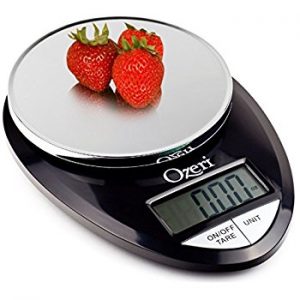In previous blogs I covered the topic: “What are the macros?” and “Why you should log your macros”, now I will dive into HOW to log and track your macros.
You might be familiar with looking at food labels and seeing grams of protein, carbohydrates, and fats. Or you may have just looked at things like sugar or calories in the past. When choosing a food it’s important to know the grams of protein, carbs, and fats for each serving. Packaged foods give you this information. For fresh fruit, veggies, and meats and most restaurant items you can search on www.calorieking.com to find this information. It is also important to know how much a typical “serving” is of the food you are eating. A serving might be bigger or smaller than you thought. Also, a serving is not a suggested amount of food for you, it’s basically just a way to help you measure it. For example, a serving of peanut butter is 2T, I usually eat 1/2 T which is actually ¼ a serving. So the grams of protein carbs and fats for that food would be ¼ of what the label says. Does that make sense?
So, how do you know exactly how much of the food you are consuming? You can use things like measuring cups and spoons, but they have been known to have some error. The most accurate and consistent way to know exactly how much food you are eating is by using a food scale. I have one and I use it often, take a look: https://www.youtube.com/watch?v=I5hxKLkbMsM
food scale
Once you have your food scale and you start becoming more comfortable with looking at food labels, the next step is to start writing down or tracking what you eat. I like to use the app MyFitnessPal to track my macros. This app is helpful because it lets you scan the barcode of packaged foods to log them into the app. You can change the amount you are eating (serving size) and then log it into the app. If you turn your phone/tablet sideways it gives you the breakdown of grams of protein, carbs, and fats for each food you eat and it totals them up for the day. I find this helpful, especially if I log my food in advance to budget in my amounts to fit my macros.
Everyone has different metabolic needs and the macro ranges that helped your friend lose weight are not necessarily going to help you lose weight also. I love flexible dieting because you can still enjoy a wide variety of foods and meet your goals without feeling restricted.
I hope this helped to simplify things a little bit, the best way to learn how to track your macros is by doing it. Once you start, usually after a day or two you get the “ah ha” moment where it just clicks and becomes easier.
Please reach out to me if you need more tips and tricks to help you reach your goals. I put together personalized macronutrient ranges for my clients and provide ongoing support and accountability throughout the entire process.
Sarah Williams
sarahwilliams@thedietdoc.com
www.sarahwilliamsnutrition.com
